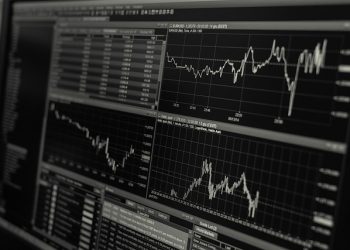Stocks on Wall Street finished their strongest week because February, with the blue-chip S&P 500 index closing at a record high, after a surge in United States inflation disappointed the marketplace’s worst-case projections.
The S&P 500 obtained 1 per cent on Friday, and also had an once a week increase of 3.8 percent, eclipsing a previous record close simply over three weeks back.
The modern technology focused Nasdaq Compound climbed up 0.7 per cent, bringing its weekly rise to 3.6 per cent.
The United States work division stated on Friday that customer rates climbed up 6.8 percent in November from the very same month in 2020, matching economic experts’ projections and also the highest possible increase in 39 years.
Regardless of the rise, the figures were something of an alleviation for capitalists who had actually girded themselves for data that could have shown a 7 per cent or larger surge.
Capitalists and also experts stated the analysis would certainly keep the Federal Get on its current program, assisting buoy markets that had been stressed that a higher inflation number would compel the Fed to tighten up financial plan much faster, injuring stocks.
” The marketplace was expecting this inflation reading and also high inflation has actually been valued right into markets for several months now,” claimed George Round, chair of investment group Sanders Morris Harris.
Several financiers additionally expect price rises to peak soon, as supply chain problems– brought on by coronavirus shutdowns as well as a rebound in energy markets from the midsts of 2020’s economic slowdown– convenience.
November’s inflation report revealed fuel costs climbed 3.5 per cent over the month, down from 4.8 percent between September and also October. The month-to-month price of rate gains for utilized vehicles as well as real estate was stable.
” The bond market is informing us inflation is not mosting likely to lack control for long,” claimed Guillaume Paillat, multi-asset profile manager at Aviva Investors.
The return on the benchmark 10-year Treasury note edged down 0.01 portion point to 1.49 percent. The five-year, five-year inflation swap rate, an action of longer-term expectations of price increases, inched lower to 2.15 percent.
The return on the two-year United States Treasury note, which relocates vice versa to the cost of the national debt tool and also tracks financial plan expectations, dipped 0.03 percent points to 0.66 percent.
Jay Powell, Fed chair, has actually offered a solid signal that the US central bank, which holds its following monetary policy meeting next week, could rapidly wind down its $120bn-a-month of bond purchases that have lowered borrowing expenses and also boosted stock exchange belief with the pandemic era.
This could be completed by March, in a precursor to the Fed increasing rates of interest from their present record low, leading economic experts surveyed for the Financial Times have stated.
” If the Fed does not draw back a few of its assistance now as well as start to normalise financial plan, they’ll have really little ammo when we do enter into the following recession,” claimed Paul Jackson, head of property appropriation research study at fund manager Invesco.
” But I presume US inflation is almost peaking out currently.”
In Europe, the regional Stoxx 600 share index closed 0.3 percent reduced. The UK’s FTSE 100 gauge closed down 0.4 percent.
Hong Kong’s Hang Seng index went down 1.1 per cent. The Nikkei 225 in Tokyo closed 1 per cent reduced.
In money, the dollar index, which tracks the efficiency of the greenback against six others, was down 0.2 percent.
These 6 overvalued stocks are making the S&P 500 look even more pricey than it truly is
It’s difficult to understand which stocks will dominate the stock exchange in a decade’s time, but we can rather confidently say which business will not be on that list: stocks that presently cover today’s market-cap ranking– particularly Apple AAPL, +2.80%, Microsoft MSFT +2.83% , Amazon.com AMZN -1.12%, Alphabet (Google) GOOG, +0.38% as well as Meta Systems (Facebook) FB, -0.02%.
That’s since it’s rare for stocks on top of the market-cap position to keep their status a years later on. Not only do they usually fall out of the leading 10, they additionally underperform the marketplace typically over the decade.
That’s according to an analysis conducted by Research Affiliates, the investment firm headed by Robert Arnott. To show the ragged edge of the market’s “top dogs,” he computed what occurred over the years of the 1980s to the 10 biggest openly traded firms at the start of that 10-year period. Eight of the 10 were out 1990’s top-10 listing, and all 10 on 1980’s list underperformed the world stock market over the subsequent years.
Arnott discovered that the 1980s were not unique. He got to a comparable outcome for the top stocks of the 1990s, 2000s, and 2010s. On average, a stock on any of these lists underperformed the market over the subsequent years. Additionally, there was between a 70% as well as 80% opportunity that any type of provided stock would not get on the similar listing one years thus.
Arnott showed these top firms’ underperformance in another method too: He built a theoretical profile that every year possessed the world’s 10-largest business. The performance of this profile is outlined in the chart below. Over the 40 years from completion of 1980 via completion of 2020, this portfolio lagged a buy-and-hold by 1.8 annualized portion factors.
Various financial investment lessons can be drawn from Arnott’s interesting outcomes. One is that cap-weighting is not the ideal weighting plan for your portfolio. Equal-weighting is one apparent option, and also it has actually defeated cap-weighting: given that 1971, according to data from S&P Dow Jones Indices, the equal-weighted version of the S&P 500 SPX, +0.95% has outshined the cap-weighted variation by 1.5 annualized portion factors.
Valuing a cap-weighted market.
Arnott thinks there are also far better means of weighting stocks in an index past equal weighting. His firm maintains a number of so-called basic indices that base a stock’s weight on fundamental qualities such as sales, cash flow, returns as well as book equity value.
Simply six stocks– Apple, Microsoft, Alphabet, Amazon.com, Tesla as well as Meta Platforms– make up 26% of the S&P 500’s complete market cap.
Yet there’s an additional investment effects of Arnott’s data that I want to concentrate on: His results highlight the difficulties identifying the assessment of an uneven market.
Consider the S&P 500 currently, in which simply 6 stocks– Apple, Microsoft, Alphabet, Amazon.com, Tesla TSLA, +1.32% and also Meta Platforms– represent 26% of the index’s complete market cap. Picture a circumstance in which those 6 are misestimated while the other 494 stocks, on balance, are extra relatively valued. In that situation, the evaluation proportions for the S&P 500 all at once might paint a manipulated image.
This scenario isn’t just theoretical. The biggest six stocks currently have an average price/earnings proportion of 62.0, according to FactSet, more than double the typical across all stocks in the S&P 500 of 29.1 and nearly three-way its typical P/E proportion of 21.4.

